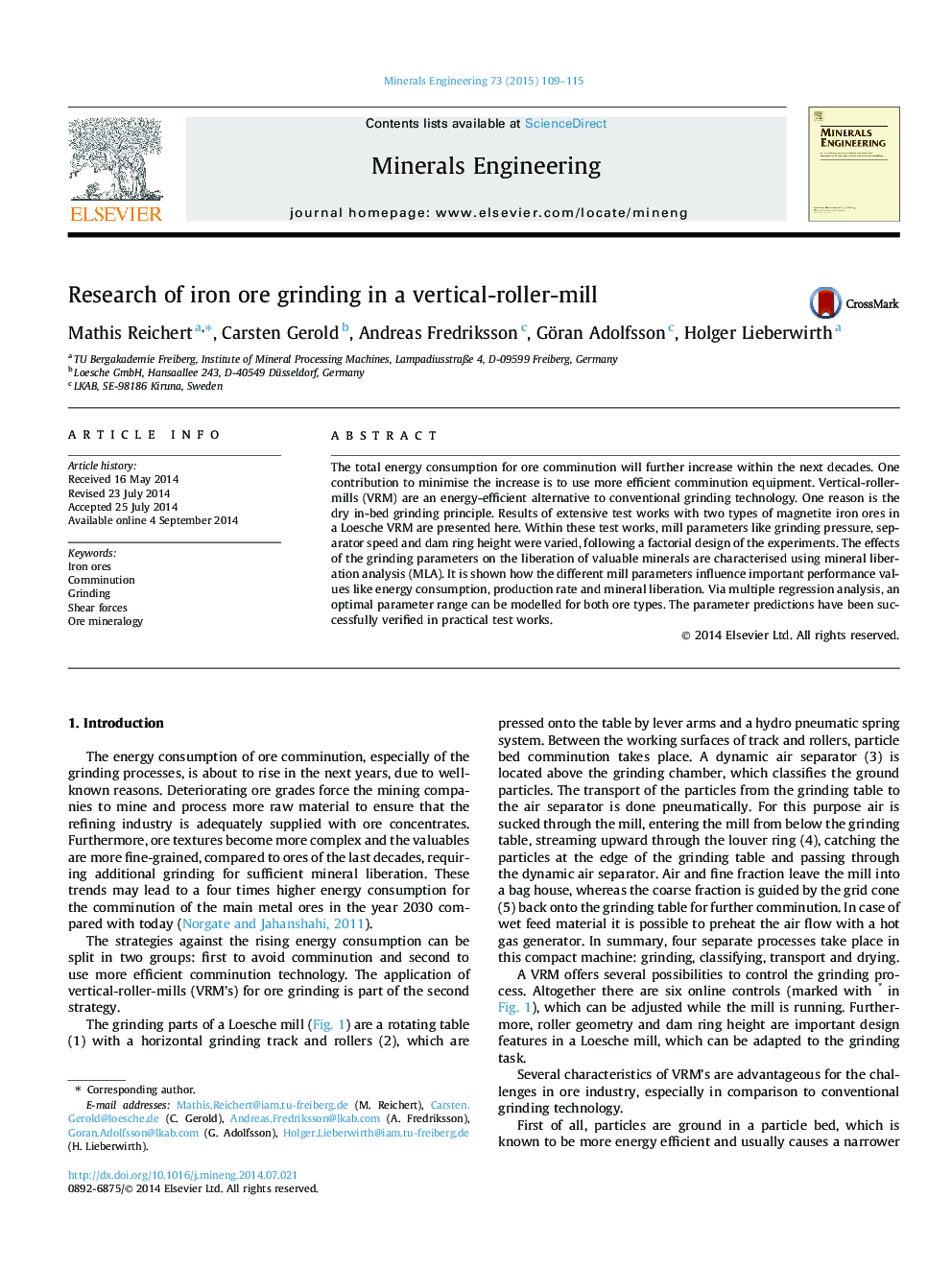| Article ID | Journal | Published Year | Pages | File Type |
|---|---|---|---|---|
| 233138 | Minerals Engineering | 2015 | 7 Pages |
•Two magnetite iron ores were comminuted with a pilot scale vertical-roller-mill.•The effect of three mill parameters was quantified using DoE methods.•The developed regression models were used for optimisation.•The VRM produced a higher magnetite liberation than a conventional pebble mill.
The total energy consumption for ore comminution will further increase within the next decades. One contribution to minimise the increase is to use more efficient comminution equipment. Vertical-roller-mills (VRM) are an energy-efficient alternative to conventional grinding technology. One reason is the dry in-bed grinding principle. Results of extensive test works with two types of magnetite iron ores in a Loesche VRM are presented here. Within these test works, mill parameters like grinding pressure, separator speed and dam ring height were varied, following a factorial design of the experiments. The effects of the grinding parameters on the liberation of valuable minerals are characterised using mineral liberation analysis (MLA). It is shown how the different mill parameters influence important performance values like energy consumption, production rate and mineral liberation. Via multiple regression analysis, an optimal parameter range can be modelled for both ore types. The parameter predictions have been successfully verified in practical test works.
